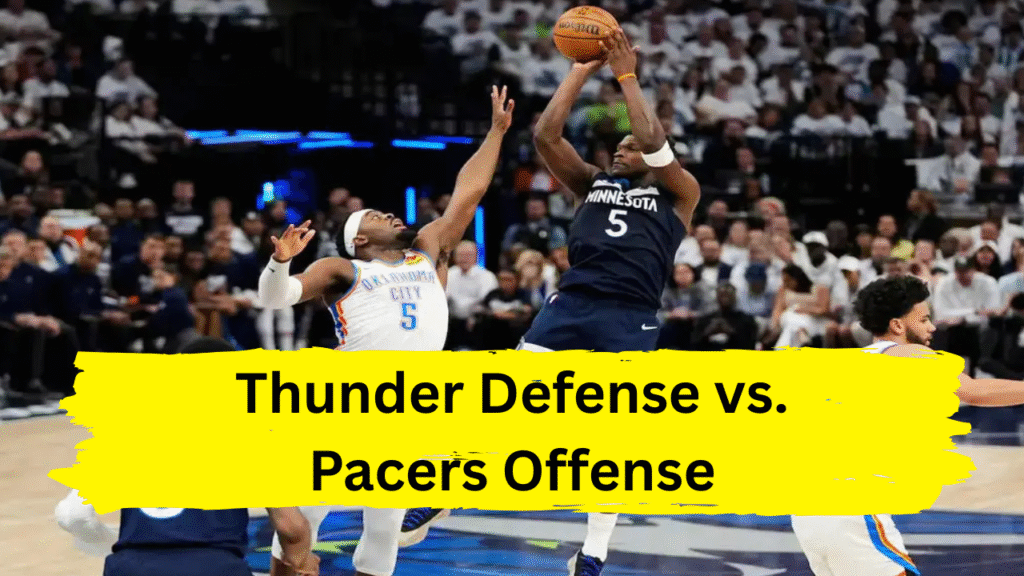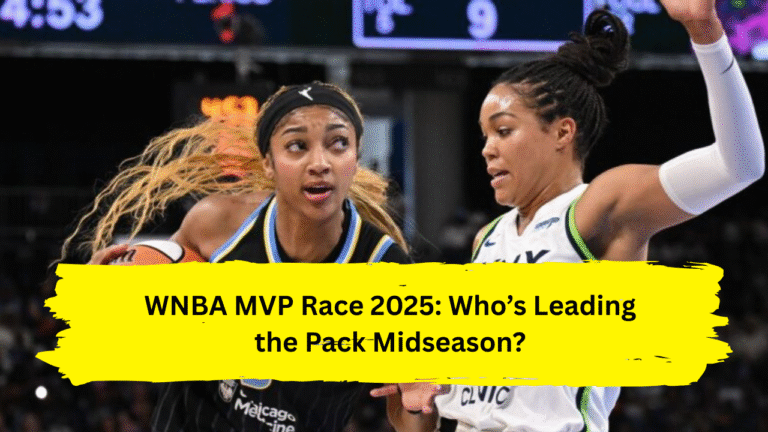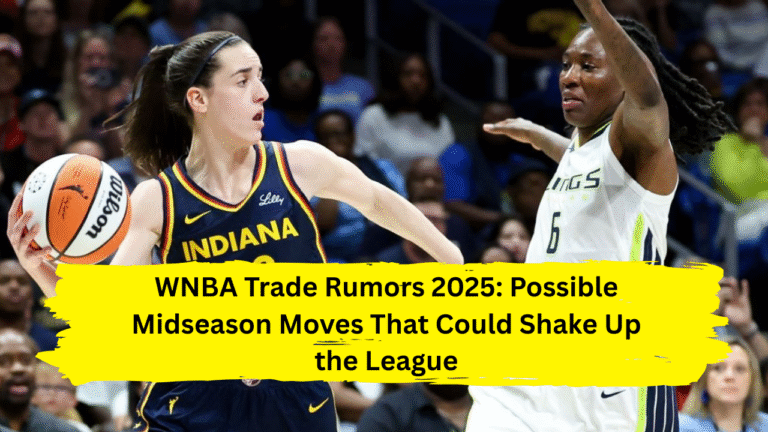
The NBA Finals stage is set for a collision of basketball philosophies so diametrically opposed it evokes the sport’s timeless clash of art versus science. On one side, the Indiana Pacers’ symphonic offense — a whirlwind of pace, precision, and a playoff-best 118.5 offensive rating — conducts the game like a maestro orchestrating chaos . On the other, the Oklahoma City Thunder’s algorithmic defense, a historically great system that strangles opponents into submission with the cold efficiency of a hydra. When these forces meet, more than a title will be decided; the very soul of modern basketball strategy hangs in the balance.
The Pacers’ Offensive Artistry: Speed, Space, and Haliburton’s Magic
Indiana’s offense isn’t merely productive—it’s revolutionary. Fueled by Tyrese Haliburton’s visionary playmaking (18.6 PPG, 9.2 APG), the Pacers play with a velocity and unselfishness that defies playoff convention . Their system thrives on three pillars:
- Relentless Pace: Indiana plays faster than any remaining playoff team, generating early offense before defenses can set. This tempo forces opponents into frantic retreats, creating mismatches and open lanes .
- Precision Shooting: The Pacers shoot a blistering 41% from three-point range in the playoffs, stretching defenses to the breaking point. Wings like Aaron Nesmith and Myles Turner convert drive-and-kick passes into daggers, punishing any help defense sent toward Haliburton .
- Haliburton’s Gravity: Like a planetary force, Haliburton bends defenses with his mere presence. His historic Game 4 performance against New York—32 points, 15 assists, zero turnovers—showcased his genius. He manipulates traps, spins double-teams into advantages, and finds shooters with passes that defy geometry . As analyst Dan Devine observed, “Everything flows from him… Pascal Siakam feasts because teams trap Haliburton. Turner’s pick-and-pops thrive because defenses fear Haliburton’s drives” .
Yet beneath this artistry lies vulnerability. Indiana ranked just 18th in defensive rebounding during the regular season, a flaw the Knicks exploited mercilessly with Mitchell Robinson grabbing 39.3% of available offensive boards . Against an Oklahoma City team that converts turnovers into avalanches, this weakness could prove fatal.
The Thunder’s Defensive Machine: A Fortress Built on Fear
Oklahoma City’s defense isn’t just the NBA’s best—it’s a historic anomaly. Their playoff defensive rating of 103.6 points allowed per 100 possessions dwarfs every contender by over seven points, a gap wider than the Grand Canyon . This isn’t luck; it’s systemic annihilation engineered through:
- Perimeter Terror: Lu Dort’s physicality, Alex Caruso’s anticipation, and rookie Cason Wallace’s tenacity form a rotating gauntlet of elite on-ball defenders. They deny driving lanes, jump passing lanes, and swarm ball-handlers like piranhas. Anthony Edwards’ disintegration in the Western Conference Finals—repeatedly forced into inefficient jumpers—stands as a grim warning . NBA legend Isiah Thomas saw echoes of his “Bad Boy” Pistons in OKC’s scheme: “They’re making Edwards a jump shooter… double-teaming him off screens, loading to the ball in transition” .
- The Holmgren Effect: Anchoring it all is 7-foot-1 Chet Holmgren, whose rim protection (3 blocks in the WCF closeout) allows perimeter defenders to gamble aggressively. His unique mobility enables him to switch onto guards and recover to the paint, turning the lane into a no-fly zone .
- Turnover Tsunamis: OKC led the NBA in forced turnovers during the regular season and amplified this in the playoffs. Their 21 forced turnovers in Game 5 against Minnesota generated 33 points—a devastating feedback loop where defense fuels offense . They prey on indecision, with Haliburton’s near-flawless ball security (1.7 turnovers per game) facing its ultimate stress test .
Coach Mark Daigneault’s tactical flexibility elevates this unit beyond physical gifts. Against Minnesota, he adjusted coverages to blunt early pick-and-roll attacks, shrinking the floor for Gilgeous-Alexander before countering with staggered screens and quick-hitting actions. “These guys are uncommon,” Daigneault marveled after clinching the Finals berth. “They allow us to operate at full capacity” .
The Tactical Crucible: Haliburton vs. the Swarm
The series hinges on whether Haliburton can solve OKC’s defensive puzzles without compromising his creativity. In their March 29th regular-season meeting—a 132-111 Thunder rout—Oklahoma City provided a blueprint. Even without Holmgren, they held Indiana to 111 points (well below their playoff average) by mucking up passing lanes and forcing the Pacers into contested late-clock shots . Key battlegrounds emerge:
1. The Pick-and-Roll Killing Fields:
When Haliburton runs screen actions, OKC will likely trap high, using their length to disrupt his vision. Indiana’s shooters must punish these rotations immediately, or the Thunder will strangle possessions. As seen in the Knicks series, when New York sent three defenders to harass Haliburton after free throws, stagnant possessions followed .
2. Transition Trench Warfare:
The Pacers want to run; the Thunder excel at stopping them. Oklahoma City’s “safety” defenders—often Jalen Williams or Dort—prevent easy outlet passes, funneling ball-handlers toward Holmgren. If Indiana can’t secure defensive rebounds (a chronic weakness), their transition game evaporates .
3. The SGA Counterpunch:
While Haliburton battles OKC’s defense, Shai Gilgeous-Alexander (32.7 PPG, MVP) attacks Indiana’s less-heralded unit. The Pacers lack a lockdown perimeter defender capable of containing SGA’s surgical drives and mid-range artistry. Andrew Nembhard will draw the initial assignment, but Gilgeous-Alexander’s ability to draw help will open passing lanes to shooters like Isaiah Joe, who torched Indiana with timely threes in their March matchup .
Historical Stakes and the Weight of Numbers
Beyond tactics, the data paints an ominous picture for Indiana. Oklahoma City’s +12.9 regular-season point differential broke a 53-year-old record previously held by the 1971-72 Lakers . Their 29-1 record against Eastern Conference teams—including dominant wins over the Pacers (120-114, 132-111)—speaks to a systemic mismatch . Sportsbooks installed the Thunder as -625 favorites, reflecting a belief that Indiana’s firepower meets its kryptonite .
Yet basketball isn’t played on spreadsheets. The Pacers’ offensive virtuosity carries an intangible edge: joy. Haliburton’s audacious passes and the team’s infectious unselfishness embody a purity that resonates. As SGA himself acknowledged about his own team, “These guys make the NBA not feel like a job… like I’m 15 playing AAU again” . That joy fuels resilience—a trait Indiana displayed by overcoming a 3-1 deficit to Boston in the East semifinals.
The Verdict: Can Beauty Slay the Beast?
The Thunder’s defense presents a paradox: to beat it, you must play with both precision and abandon—a near-impossible ask under Finals pressure. Haliburton’s genius lies in making the impossible look routine, but OKC’s switching schemes and length will challenge every pass, every cut, every dribble.
For Indiana to prevail, they must:
- Win the Glass War: Dominate offensive rebounds to offset OKC’s transition defense.
- Shoot Through Contests: Maintain elite 3-point efficiency against the league’s best closeout defense (held playoff foes to 31% from deep).
- Unleash Haliburton Early: Force OKC into rotations before their half-court defense sets.
Ultimately, Oklahoma City’s historic defense thrives by turning strengths into weaknesses. They silenced Anthony Edwards’ drives, unraveled Denver’s half-court execution, and now aim to extinguish Indiana’s incendiary offense. The Pacers’ 118.5 offensive rating isn’t just facing a test—it’s confronting basketball’s most formidable firewall. If Haliburton cracks it, he etches his name in legend. But the Thunder’s fortress has yet to fall, and its architects built it to withstand siege .




